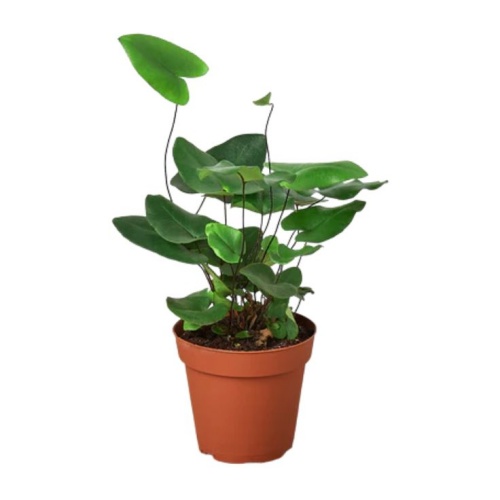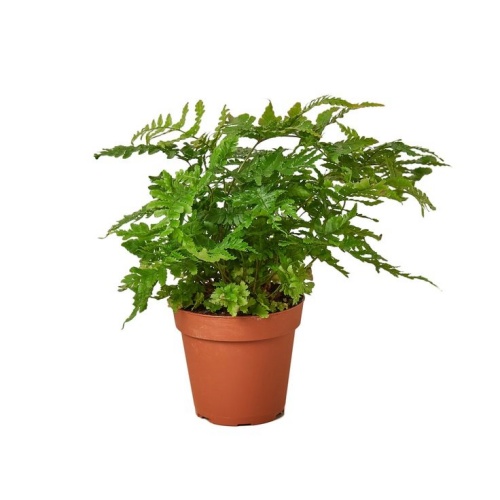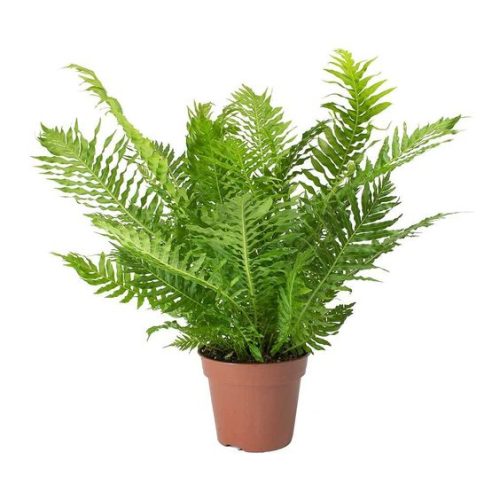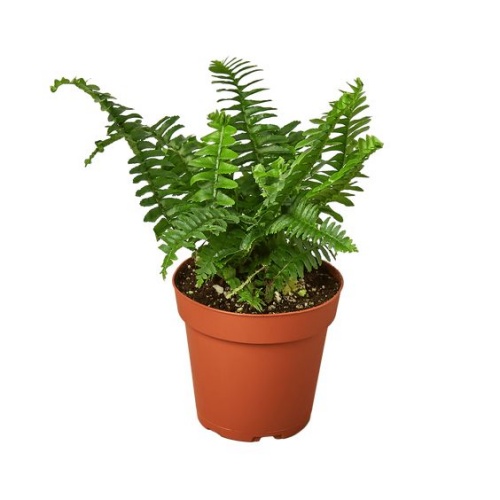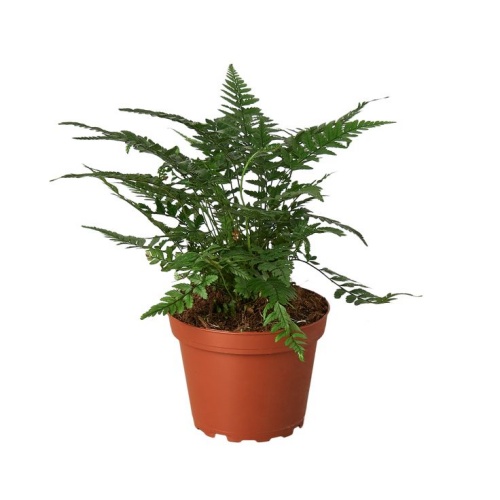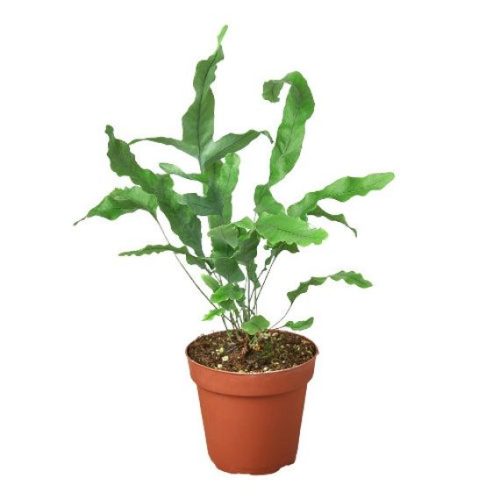Bird’s Nest Fern
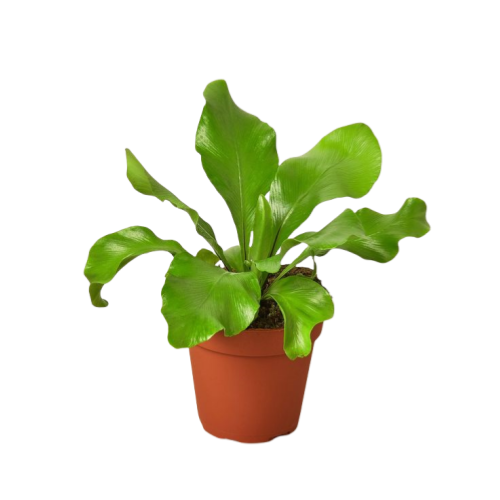
- Botanical Name: Asplenium nidus
- Family Name: Aspleniaceae
- Kakau:
- Te pāmahana:
- OThers:
Tirohanga whānui
Whakaahuatanga Hua
Fern-tastic Features and Fabulous Functions: The Bird’s Nest Fern’s Tropical Tale
The Bird’s Nest Fern’s Origins and Grace
Ko te Gem o te ngahere ngahere
The Bird’s Nest Fern, scientifically known as Asplenium nidus and a member of the Aspleniaceae family, is native to tropical regions of Asia, Eastern Australia, and Polynesia. This plant typically grows on trees in its natural habitat, especially in tropical rainforests, where it clings to the curvatures of trunks or branches, showcasing a beautiful scene of harmonious coexistence with nature.
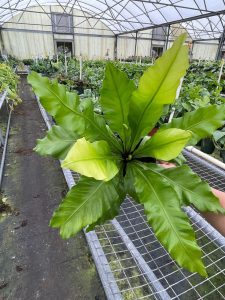
Bird’s Nest Fern
Nga Rosettes ahurei me te Fronds
Te Bird’s Nest Fern is renowned for its distinctive growth pattern, forming a prominent rosette with broad, lance-shaped, shiny, and bright green fronds adorned with contrasting dark midribs and wavy edges. The eye-catching leaf clusters exhibit a vase-like growth habit, creating a unique effect similar to a shuttlecock, with the central part resembling a bird’s nest.
Ko nga rau hou ka puta mai i te rohe pokapū, ko te kohanga, e waatea ana i te tipu me te ataahua me te hihiri. Ka taea e nga fronds pakeke te tae ki te 4-5 waewae i roto i te tipu o waho engari he iti ake te tipu i roto i nga ipu o roto, i te nuinga o nga waewae 1-2 waewae. Ko nga keehi a te spore kei runga i te taha o te fronds, ka heke mai i te whakakotahitanga ki te taha rau, me te taapiri i tetahi waahanga o te Mihi me te kai reka.
The Essential Care Guide for Bird’s Nest Fern
Tohutohu atawhai
The Bird’s Nest Fern is a tropical plant, and its growth habits are closely related to tropical climates. This plant prefers moist and warm environments, requiring high humidity to maintain its vibrant green color and shine. When grown indoors, It should be placed away from drafts and heat sources to avoid temperature fluctuations that can stress the plant.
Maamaa te maama
Bird’s Nest Fern do not require direct sunlight; they thrive better under bright, diffused light. Direct sunlight can cause leaf burn, so it’s best to position Bird’s Nest Ferns where they can receive indirect light, such as near east or north-facing windows. Outdoors, they typically grow in the shade of trees, providing the shade they need.
Kia mahana me te pumau
It prefer warm and stable temperatures, with an ideal growth range of 18°C to 27°C (65°F to 80°F). They are not cold-tolerant, so they need to be kept above 15°C (59°F) during winter to avoid cold damage. In cooler environments, the growth rate of Bird’s Nest Ferns slows down or may even halt.
Pai-horoi me te whai hua
For soil, it need a well-draining and fertile medium. They do not like waterlogged conditions, so the soil should contain a proportion of organic matter, such as leaf mold or peat, to keep it moist while ensuring good drainage. Additionally, regular fertilization can promote healthy growth of Bird’s Nest Ferns, especially during the growing season, when liquid fertilizer can be applied once a month.
The Bird’s Nest Fern’s Aesthetic and Applications
The Unique Charm of Bird’s Nest Fern
The Bird’s Nest Fern (Asplenium nidus) is renowned for its distinctive morphological features, being a perennial epiphyte. Its fronds radiate outward from a central rosette, creating an elegant arc rather than the feathery fronds common to other ferns. The leaves are smooth, lanceolate, and sometimes exhibit a slight ripple when exposed to ample light. Mature Bird’s Nest Ferns can grow up to 3-5 feet tall outdoors, while indoors in containers, they are typically more modest, reaching about 2 feet in height.
Ideal Settings for Bird’s Nest Fern
Na te mea ko o raatau ahua o te hau me te ahua ataahua, ka whakamahia e ratou mo te whakapaipai o roto, ina koa i nga tautuhinga kei te hiahia te noho rahui. He pai te pai o te whakatakoto i roto i te wharepaku, i te mea e tupu ana enei otaota i roto i nga momo mahana, he mahana. I tua atu, ka pai ake a raatau tipu e whakairihia ana, ka whakanohoia ki nga kete, i nga kaitirotiro ranei hei taapiri i te panoni taiao ki nga waahi noho. I te mea kaore e hiahiatia ana e raatau te ra tika, ko te raki, ko te Rawhiti-anga ranei i nga waahi pai. Ka mahi ano hoki i te wa e hopu ana i nga taonga o roto i nga kari o roto, ina koa ki te whakatipu i te hunga hihiri e hiahia ana ki te whakauru i tetahi paanga ki roto i o raatau kaainga.





